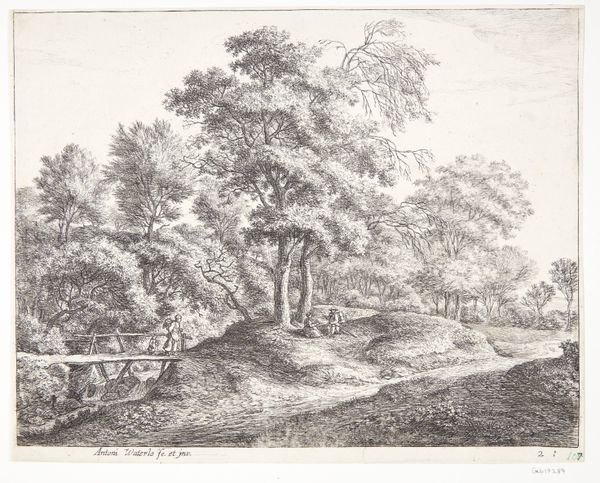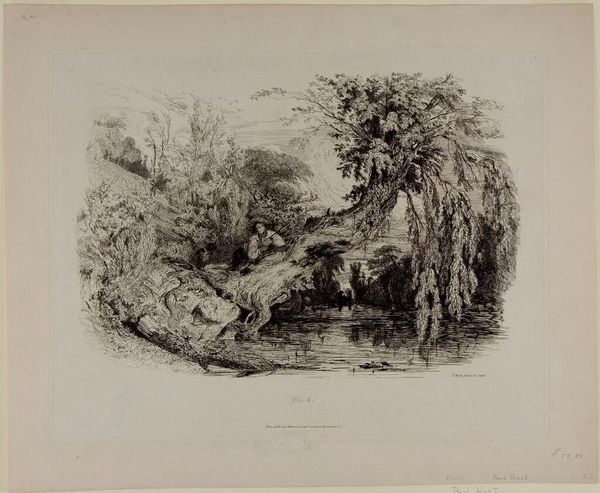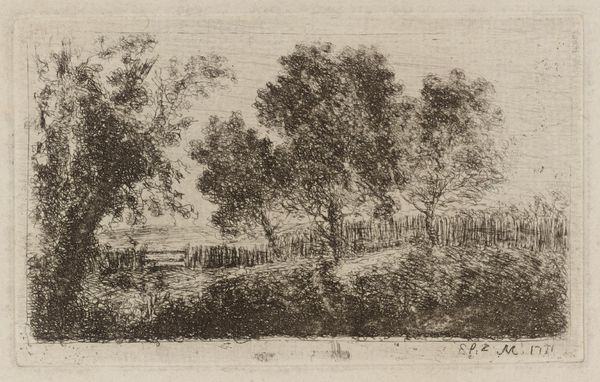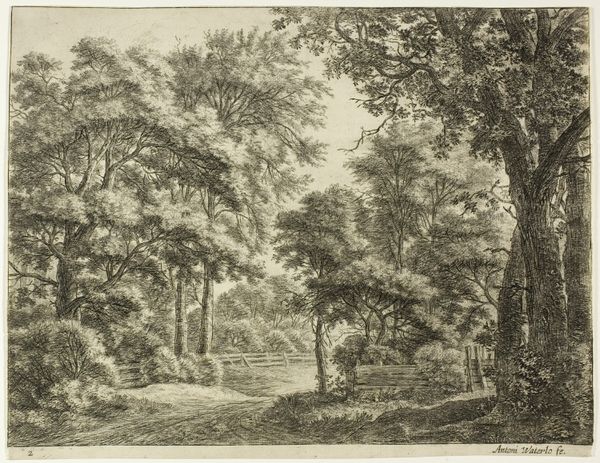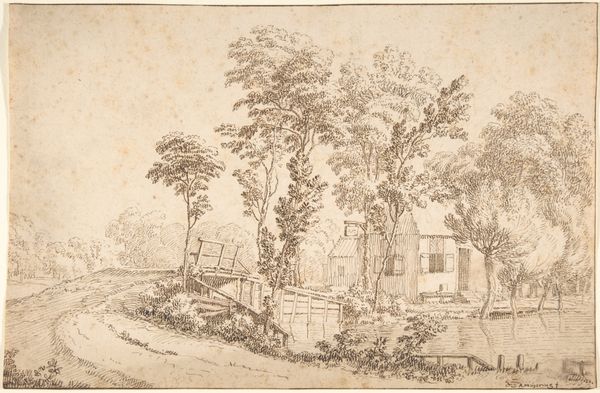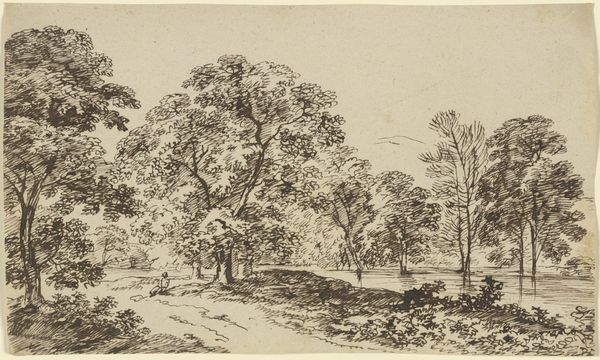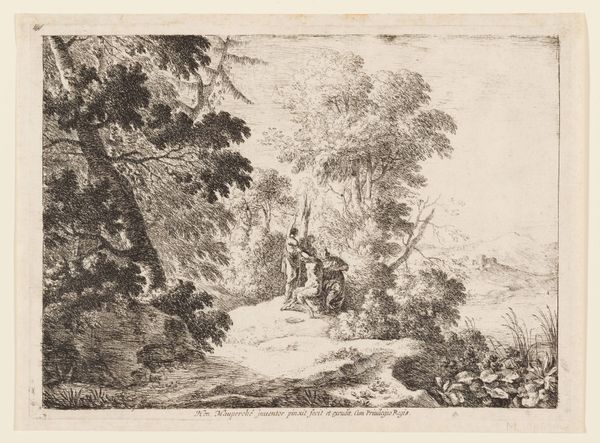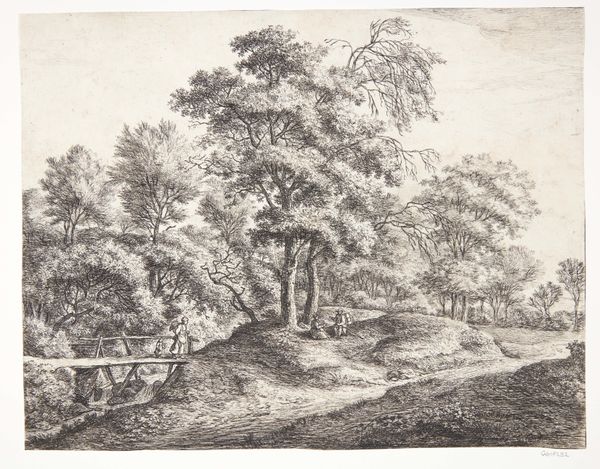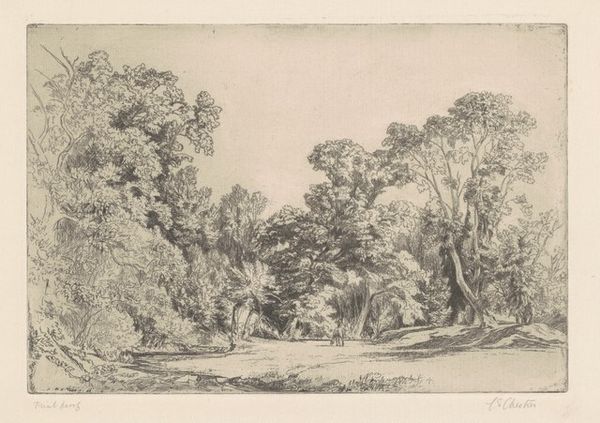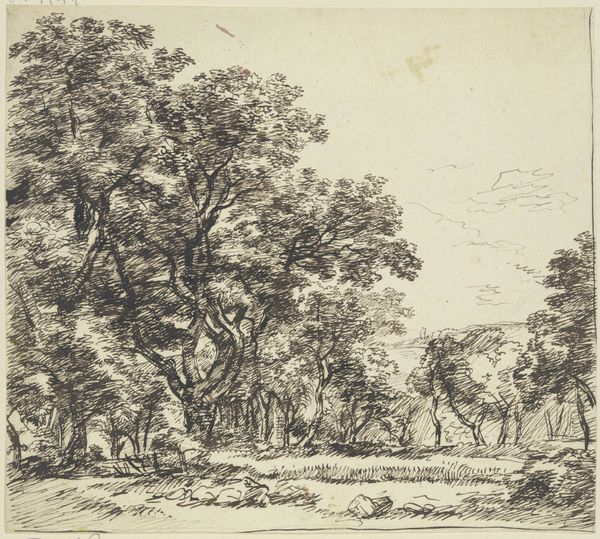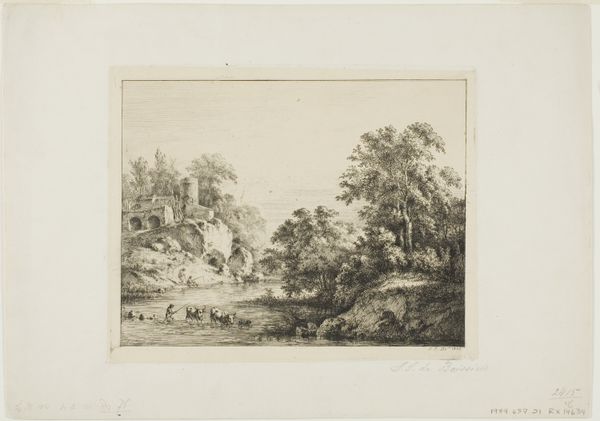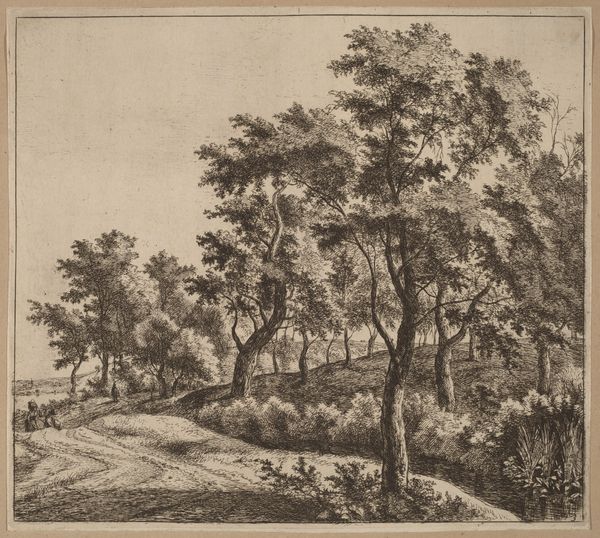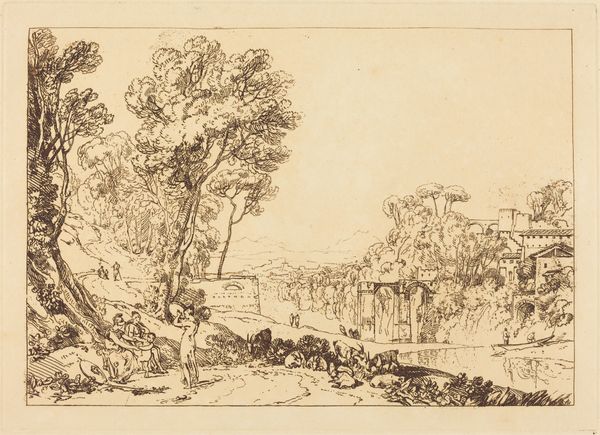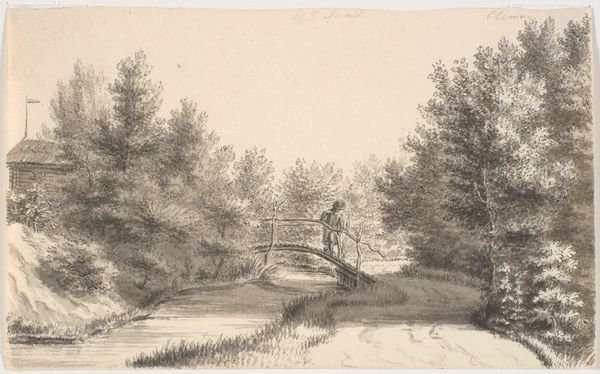
Dimensions: 226 × 287 mm (image); 249 × 296 mm (plate); 266 × 367 mm (sheet)
Copyright: Public Domain
Curator: I’m struck immediately by the density of line, the way it builds a shadowed canopy, almost claustrophobic in its detail. Editor: This is "The Road to St. Gilles," an etching and drawing on paper by Auguste-Louis Lepère, created in 1911. It’s currently part of the collection at The Art Institute of Chicago. Lepère was a key figure in the revival of original printmaking in France. Curator: You can really see that dedication to the craft here. The tonal range is remarkable for an etching. Notice how Lepère manipulates the density of his lines to create areas of deep shadow versus airy light, look at the way light gently hits the path, contrasted against the mass of tangled branches to the left. Editor: Lepère's work often depicted scenes of Parisian life, but he also traveled extensively. St. Gilles, in the South of France, offered him a very different subject than his usual urban landscapes. This print reveals an appreciation for the rural landscape. The people look so small against the immensity of those old trees. Curator: Absolutely. The composition utilizes the trees, to guide the viewer's eye from the edges into the heart of the work, a rather successful example of framing if I may say so myself. And the human figures, rendered with less detail, really function to give scale to the majestic surrounding plant life. It makes you wonder what these folks might be discussing on their journey. Editor: Consider too how images like these, celebrating a simple, perhaps idealized version of rural life, were circulating within a rapidly industrializing France. There was a definite push and pull between embracing modernity and clinging to more pastoral imagery, especially in artistic circles. Lepère, known as a socially engaged artist, was interested in communicating to his contemporaries what modernity was leaving behind. Curator: Yes. This contrast between detailed rendering and selective elision serves a dual purpose, drawing the eye where it should rest, a great example of effective artistry and well-thought composition overall. Editor: The work indeed becomes more complex the more you look. It is more than just an Impressionist Landscape. Curator: Precisely. It's a moment captured and simultaneously a reflection on progress. Editor: Well, a print to certainly contemplate for a moment longer on this journey.
Comments
No comments
Be the first to comment and join the conversation on the ultimate creative platform.
